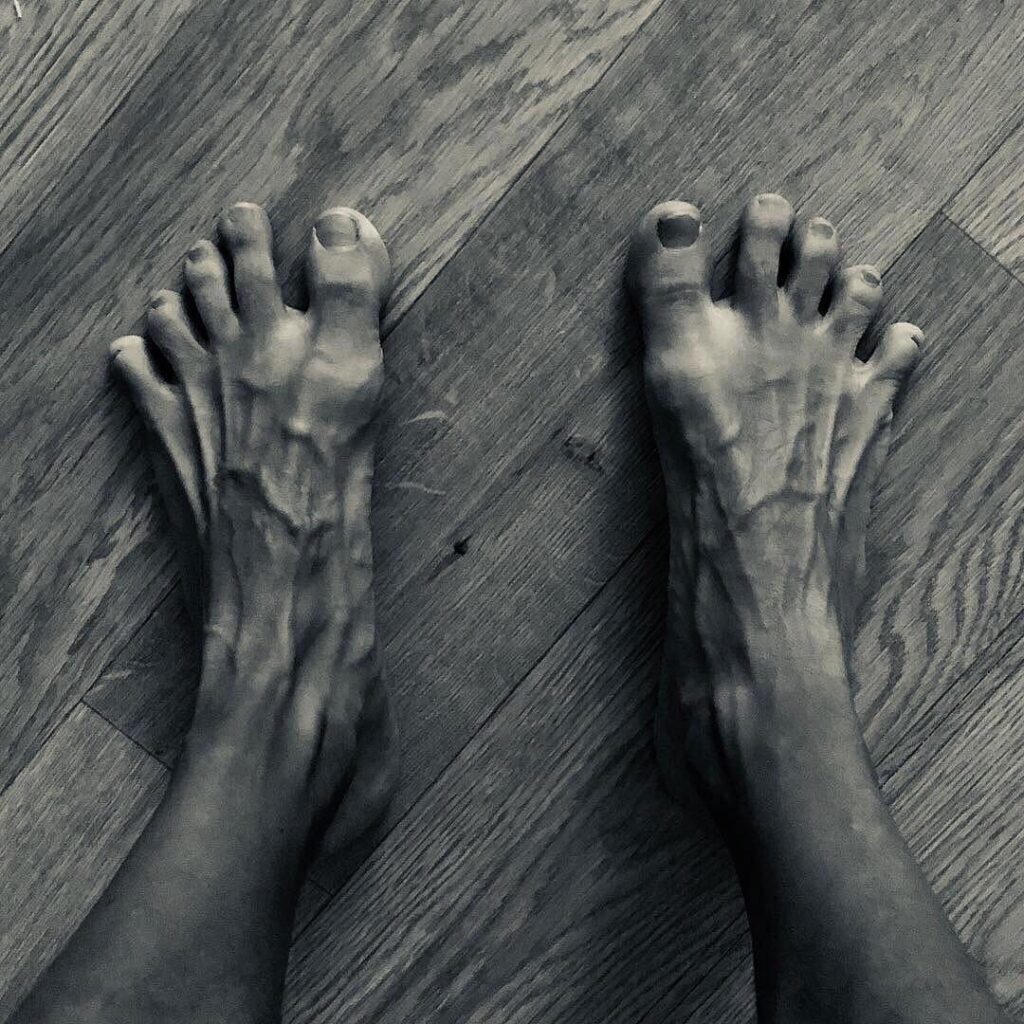Are Modern Shoes Destroying Our Feet?
11 April 2024 - 16:25
What are some of the health-damaging effects of wearing the wrong shoes? VivoBarefoot CEO Gahalad Clarke talks feet with host of the Wellness Way Podcast, Philly J Lay

VivoBarefoot
In last month’s episode on the Wellness Way Podcast, Philly had the pleasure of sitting down with the amazing Galahad Clarke, our podcast sponsor and co-founder of VivoBarefoot, a renowned and revolutionary footwear brand dedicated to replicating, as much as humanly possible, the sensation of being barefoot.
Founded in 2012 by two seventh-generation cobblers, Galahad and Asher Clark, these barefoot-inspired shoes fly in the face of the detrimental effects that conventional footwear has on our health, in both a physical and spiritual sense.
And although things like grounding (walking on the Earth without shoes), are amazing for connecting you to the Earth’s electromagnetic field, reducing blood pressure and easing stress and anxiety, our feet still require a degree of protection and comfort from things like glass on the floor, the odd dog owner that doesn’t clean up their pet’s poop (!), or jagged hiking terrain, and so these shoes solve a massive problem for all of us that want to connect more with nature.
In the episode, Philly and Galahad discuss the negative impact that the shoe industry has had on feet, which Galad describes as ‘deforming’ them as part of a status-driven process.
But what exactly are some of the negative consequences of wearing shoes that do not support our feet?
Decreased Foot Strength
Modern shoes often provide excessive cushioning and support, which can lead to a weakening of the muscles in the feet.
Studies have shown that wearing shoes with elevated heels or arch supports can decrease muscle activity in the feet, contributing to muscle atrophy and weakness over time.
Altered Biomechanics
Conventional footwear can alter the natural biomechanics of the feet and gait, which refer to how the bones, muscles, tendons, and ligaments work together to support the body and facilitate movement. When altered, this can lead to issues such as overpronation or supination.
- Overpronation occurs when the foot rolls inward excessively during walking or running, causing the arch to collapse and the ankle to turn inward. This can lead to increased stress on the inner side of the foot and ankle, potentially causing issues like plantar fasciitis, shin splints, or knee pain.
- Supination, also known as underpronation, happens when the foot rolls outward too much during the gait cycle, placing more weight on the outer edge of the foot. This can result in reduced shock absorption and stability, leading to problems such as ankle sprains, stress fractures, or iliotibial band syndrome.
Research has found that wearing shoes with elevated heels or restrictive toe boxes can change foot strike patterns and increase joint loading during walking and running, potentially contributing to musculoskeletal injuries.
Foot Deformities
Tight, narrow shoes can cause or exacerbate foot deformities such as bunions, hammertoes, and ingrown toenails.
Studies have shown a correlation between narrow toe boxes and the development of bunions, as well as between wearing high-heeled shoes and the prevalence of foot deformities.
Foot Pain
Ill-fitting or unsupportive footwear can contribute to foot pain and discomfort, including conditions such as plantar fasciitis, metatarsalgia, and Achilles tendonitis which all involve inflammation.
Research has demonstrated a link between wearing shoes with inadequate support or cushioning and an increased risk of foot pain and injury.
Reduced Proprioception
Thick, cushioned soles in modern shoes can diminish proprioceptive feedback, which is essential for balance and coordination.
Reduced proprioception means a diminished ability to sense the position, movement, and orientation of your body parts. Proprioception is vital for balance, coordination, and movement control. When proprioception is impaired, you may have difficulty maintaining balance, coordinating movements, and judging distances accurately.
Studies have shown that wearing minimalist or barefoot-style shoes can enhance proprioception and sensorimotor control, leading to improved balance and lower limb function.
Our Natural Feet
In this Facebook post by VivoBarefoot, we’re shown what an actual healthy foot looks like, which is a far cry from the average pair of feet you see today as a result of prolonged unhealthy shoe-wearing:

‘What healthy feet look like! Strong healthy feet are wide with toes that splay outwards. This is their natural, stable shape which can be lost if squeezed into tight, restrictive shoes for a long time, eventually taking on the pointed shape of shoes.
But as with anything else in the body, it’s never too late to rehabilitate and restore the strength and function of your feet through exercises, being barefoot more often and transitioning to barefoot shoes when shoes are necessary.
Here’s some great insight from Threequilibrium Studio – “Your feet show how gravity is crucial to movement. It doesn’t matter what sport you dedicate your life to, if your training program doesn’t take into account the health of your feet, you will never completely express your true potential in terms of health and performance.”‘
Better Shoes for Better Health
Overall, the scientific evidence suggests that modern footwear can have several negative impacts on foot health, including decreased strength, altered biomechanics, foot deformities, foot pain, and reduced proprioception.
Embracing footwear that promotes natural foot movement and function, such as minimalist or barefoot-style shoes, is one of the best ways to mitigate these issues and support overall foot health. That, and doing a bit of grounding on a lovely bit of grass!
Where to Watch
You can watch this fascinating discussion on Philly’s YouTube channel here. You can also listen on Apple & Spotify.
Here’s to healthier feet!